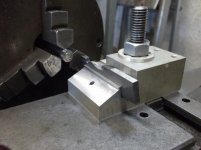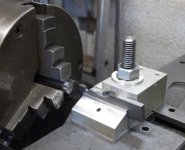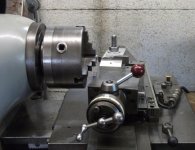Billtodd
Titanium
- Joined
- Feb 8, 2009
This is my experimental skiving tool in action.
Any expert skivers out there may suggest some improvements. ATM I think my angle are all too shallow and there appears to be a bit of rubbing, so my clearance angles are wrong somewhere.
https://www.youtube.com/watch?v=n5b7IimlLzg&feature=youtu.be
Bill
Any expert skivers out there may suggest some improvements. ATM I think my angle are all too shallow and there appears to be a bit of rubbing, so my clearance angles are wrong somewhere.
https://www.youtube.com/watch?v=n5b7IimlLzg&feature=youtu.be
Bill






 and it's not the easiest process to get right.
and it's not the easiest process to get right. ) if it's carbon steel stay where you are.
) if it's carbon steel stay where you are. I will try upping the speed . the blade is from an old paper shear. It looks like carbon steel but could be hss (if it burns it burns...)
I will try upping the speed . the blade is from an old paper shear. It looks like carbon steel but could be hss (if it burns it burns...) ........ so I get where you stand.
........ so I get where you stand. ) and have been waiting until I got my ex-DSM cutting oil/coolant pump married up with a strainer/tank cover for the HLV, I'm very encouraged by your example.
) and have been waiting until I got my ex-DSM cutting oil/coolant pump married up with a strainer/tank cover for the HLV, I'm very encouraged by your example.